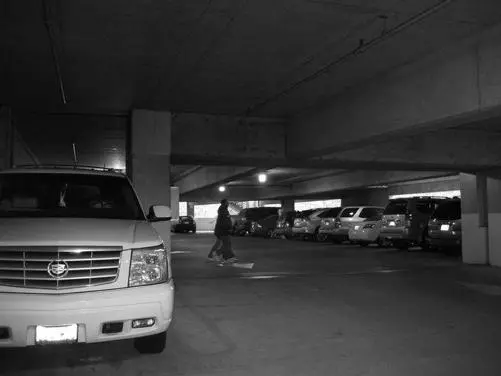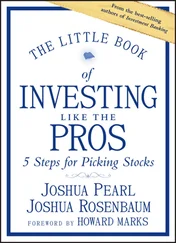This indicator is often called the “tell.” Poker players coined this term, which refers to some movement or gesture that lets them figure out when an opponent is bluffing. In the self-defense and martial arts communities, the tell has been called many things, such as the adrenal dump or the twitch. If you do not see the tell you are bound to lose. Even if you are really, really fast, action is always faster than reaction. In other words, missing the tell is what gets you sucker punched. Recovery after the first strike is challenging, though not impossible.
Violence doesn’t happen in a vacuum. There is always some type of escalation process beforehand, even if it is really short or takes place solely in the mind of the aggressor. By understanding the indicators of a forthcoming attack you will have a better opportunity to avoid confrontations altogether, or where necessary, defend yourself effectively. If you miss these vital clues, you will have a tough time responding to sudden violence. It is even worse if you are thinking “fist,” failing to notice the knife in his grip. Armed or unarmed, if you don’t see an attack until the last moment you will be at a severe disadvantage. It takes a certain amount of time to realize what is happening, shift your mental gears, form a plan of action, adopt a defensive posture, and ward off the attack. Unless you’re highly skilled and very well trained, you won’t have enough time to respond to a surprise attack without getting hurt.
Looking for the tell involves noticing the really small physical movements a person might make to signal intent to attack as well as subtle changes in the person’s energy. Physical signs are essentially manifestations of an adrenal response that implies a person is about to attack. These indicators could include a slight drop of the shoulder, a tensing of the neck, or a puckering of the lips. You will also want to trust your intuition here to discern a change in the person’s energy, virtually undetectable from a physical standpoint but easy to spot once you know what you are looking for.
Some examples of where changes of energy may constitute a tell include:
• A person who was standing still moves slightly. A weight shift is far subtler than a step, but the change is possibly preparation for attack.
• A sudden pallor or sudden flushing of the person’s face (that is, an adrenaline-induced vasoconstriction).
• A person who was looking at you suddenly looks away or, conversely, a person who was looking away suddenly makes eye contact.
• A change in the rate, tone, pitch, or volume of a person’s voice. An overt example is when someone who is shouting becomes suddenly quiet or, conversely, one who has been quiet begins raising his or her voice.
• A sudden change in the person’s breathing (i.e., shallow and fast for untrained adversaries; slow and deep for trained opponents)
Whether you see it or not, there is almost always some indicator that warns you of a person’s intent just before he attacks. Missing this “tell” is what gets you sucker punched.

By understanding the indicators of a potential attack, you will have a better opportunity to avoid confrontations altogether, or where necessary, defend yourself effectively. Action being faster than reaction, the earlier you identify these indicators, the better prepared and safer you will be. Know when he is eager to hit you; it gives you a leg up when it becomes necessary to counterattack.
Don’t Let Them Get Into Position for Attack
You can be sure of succeeding in your attacks if you only attack places that are undefended.
- Sun Tzu
What is big is easy to perceive; what is small is difficult to perceive.
- Miyamoto Musashi
It’s common knowledge that bad guys cheat to win. These people aren’t going to pick a fair fight with someone when they stand a good chance of getting hurt in the process. Your adversary, therefore, will want to surprise and overwhelm you whenever possible. He may very well deploy a weapon as well. Furthermore, thugs often work together in small groups to stack the odds even higher in their direction.
The good news is that the bad guys cannot hurt you if they cannot reach you. In order to pull off a successful attack, the other guy needs to close distance and move into a position from which he can strike. Fists, feet, knives, blunt instruments, and other handheld weapons require close range to be effective. Even gunfights typically take place at close range. According to Federal Bureau of Investigation statistics, about half of all gun murder victims are killed from a range of five feet or less. Consequently, the aforementioned five-foot rule is good to remember.
Unless a lot of alcohol or drugs are involved, however, you will rarely be attacked in the middle of a crowd. Here the adversary has less control over the encounter and is more likely to get caught. Further, while a bad guy may attempt to take you to an isolated place to commit the violence he intends, he is not likely to find too many victims in remote, secluded locations. Consequently, fringe areas adjacent to heavily traveled public places are where the majority of violent crimes occur. This includes areas such as parking lots, bathrooms, stairwells, laundry rooms, phone booths, ATM kiosks, and the like.
Fringe areas adjacent to heavily traveled public places are where the majority of violent crimes occur.

Your level of awareness should be kicked up a notch whenever you travel through these fringe areas. Pay attention to other individuals and behaviors that may constitute a threat. There are a variety of tactics that bad guys might use to get themselves into position to attack you. These include closing, cornering, surprising, pincering, herding, or surrounding.
Fights, even most gunfights in civilian settings, begin up close. Consequently, the most common method of getting close enough to attack is simply by walking up to the victim. This is often combined with some type of distraction, typically verbal, to help the bad guy seem less threatening while he maneuvers himself into position to strike. Remember the four Ds (dialogue, deception, distraction, and destruction)? The goal is to move in close so that he can surprise and overwhelm you with the attack.
There is no legitimate reason for a person you do not know to get closer than five feet from you on the street unless you are in the middle of a large crowd or sitting on public transportation (for example, busses, subways, trains). Trust your intuition. If he makes you uncomfortable and tries to close distance, warn him away. Don’t worry about being rude or breaking some social norm. It is better to be a little embarrassed and safe than beaten to a pulp and sorry. After all, this is someone you’ve never met before and will likely never meet again. Anyone who insists on closing after you have warned him away has clearly announced that his intentions are less than honorable. Demand space and be prepared to fight if it is not given.
Fringe areas adjacent to heavily traveled public places are where the majority of violent crimes occur. This includes areas such as parking lots, bathrooms, stairwells, laundry rooms, phone booths, ATM kiosks, and the like. In order to initiate an attack, the bad guy(s) must close distance and/or control your movement in order to get into range. They can do this by closing, cornering, surprising, pincering, herding, or surrounding you. Spotting these behaviors ahead of time gives you a fighting chance.
Читать дальше













